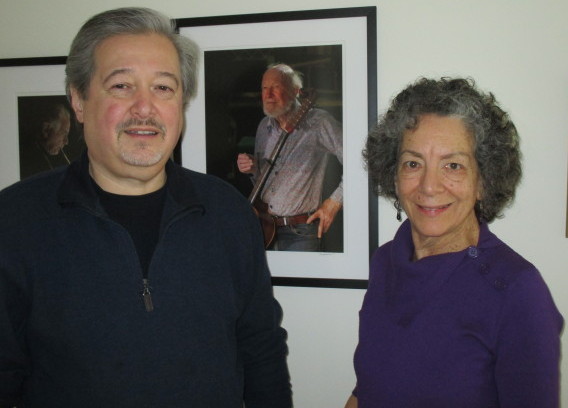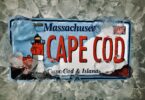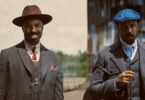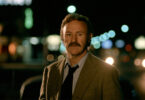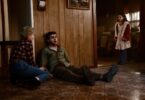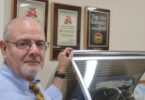ORLEANS – The Pete Seeger photography rules were very simple, explained photographer John Economos. “I’d ask Pete, ‘Do you mind if I take your picture?’ And he’d answer, ‘As long as I don’t know about it.’ “
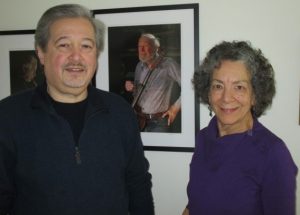
John Economos and Maxine Smith – The Econosmiths in front of one of their photos of the legendary Pete Seeger.
Pete Seeger, the legendary folk singer / activist, passed away at the age of 94 on January 27, 2014. Economos and his wife, Maxine Smith, make up the “Econosmith” photography team of Orleans that captured iconic later-year images of Seeger and many other American folk music heroes including Richie Havens and Judy Collins. Among their many credits are photos for albums for Seeger – “At 89” and “The Rivertown Kids.”
“Our goal is to capture the spirit, or the soul, of the person performing,” said Smith.
They are able to do so, according to some Cape people who have hired the Econosmiths, because they are so unobtrusive, and because they understand folk music.
“They are die-hard folkies,” said David Roth, a nationally-touring singer/songwriter who lives in Orleans. “They get it. They are part of the fabric of folk music.”

